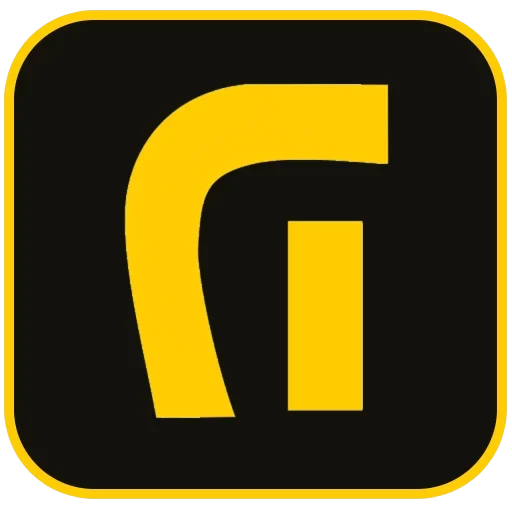How Long Does It Take to Learn Web Design? A Realistic Roadmap
For anyone considering a career in the digital world, one of the most common questions is, “How long does it take to learn web design?” The answer isn’t a simple number; it’s a journey that depends on your background, goals, and dedication. While you can grasp the basics in a few months, becoming a proficient, job-ready professional typically requires a more structured approach. This article provides a realistic roadmap, breaking down the timeline from foundational knowledge to advanced skills, helping you navigate your path to becoming a web designer and developer.
Before we dive in, it’s crucial to distinguish between web design and web development. Web design focuses on the user experience (UX) and user interface (UI)—the look, feel, and usability of a website. Web development is the process of building and maintaining the website’s core structure and functionality using code. This guide covers the comprehensive path to becoming a skilled web professional who understands both, with a primary focus on the development skills needed to bring designs to life.
The Foundational Stage (Months 1-3): Mastering the Core Trio
Every aspiring web professional must start with the fundamental building blocks of the web. This initial phase is non-negotiable and sets the stage for everything that follows. The goal here is not just to know what HTML, CSS, and JavaScript are, but to understand how they work together to create a seamless user experience.
HTML: The Skeleton of the Web
HTML (HyperText Markup Language) is the standard language for creating web pages. It provides the basic structure, or skeleton, of your site. Learning HTML involves understanding tags, elements, and attributes to organize content like text, images, and links.
- What you’ll learn: Semantic HTML5 elements (e.g., `<header>`, `<nav>`, `<article>`), forms, tables, and accessibility best practices.
- Realistic Timeline: With consistent practice, you can become proficient in HTML within 2 to 4 weeks.
CSS: The Style and Appearance
CSS (Cascading Style Sheets) is what brings your website to life visually. It controls the colors, fonts, layouts, and overall aesthetic. Modern CSS is incredibly powerful, enabling complex layouts and responsive designs that adapt to any screen size.
- What you’ll learn: Selectors, properties, the box model, and modern layout techniques like Flexbox and CSS Grid. A key focus will be on creating responsive designs that work flawlessly on desktops, tablets, and mobile devices.
- Realistic Timeline: Mastering CSS fundamentals and responsive design principles will take approximately 4 to 6 weeks.
JavaScript: The Brains and Interactivity
If HTML is the skeleton and CSS is the skin, JavaScript is the nervous system. It’s a programming language that allows you to implement complex features on web pages, making them interactive and dynamic. From simple image sliders to complex single-page applications, JavaScript is the engine behind modern web experiences.
- What you’ll learn: Core concepts like variables, data types, functions, loops, and DOM (Document Object Model) manipulation. Understanding how to handle user events (like clicks and keyboard presses) is a primary goal.
- Realistic Timeline: Gaining a solid grasp of foundational JavaScript requires focused effort for about 8 to 12 weeks.
End-of-Stage Goal: By the end of this phase, you should be able to build a simple, responsive, and visually appealing static website, such as a personal portfolio or a landing page for a small business. This practical application is crucial for solidifying your knowledge.
The Intermediate Stage (Months 4-7): Becoming a Front-End Developer
Once you’ve mastered the fundamentals, it’s time to build upon them with the tools and frameworks that professional developers use daily. This stage is about increasing efficiency, working with data, and preparing yourself for a junior developer role.
Version Control with Git
Git is a version control system that helps you track changes to your code. It’s an indispensable tool for collaborating with other developers and managing projects of any size. Learning Git and using platforms like GitHub will be a standard part of your workflow.
- What you’ll learn: Creating repositories, committing changes, branching, merging, and collaborating on projects.
- Timeline: You can learn the basics of Git in about 1 to 2 weeks.
Diving into JavaScript Frameworks
Modern web development heavily relies on JavaScript frameworks and libraries to build complex applications more efficiently. Instead of writing everything from scratch, these tools provide pre-written code and a structured way to build.
- Popular Choices: React, Vue, and Angular are the three most popular options. It’s recommended to start with one and master it. React currently has the largest market share and a vast community, making it an excellent choice for beginners.
- Timeline: Becoming comfortable with a framework like React can take 6 to 8 weeks of dedicated learning and project-building.
Interacting with Data: APIs
Websites are rarely static; they need to display dynamic data. An API (Application Programming Interface) allows your website to communicate with a server to fetch and send data. For example, a weather app uses an API to get the latest forecast data.
- What you’ll learn: How to use the `fetch` API in JavaScript to make requests to external APIs and display the retrieved data on your website.
- Timeline: Learning to work with APIs can be integrated into your framework learning, typically taking 2 to 3 weeks to understand well.
End-of-Stage Goal: At this point, you can build dynamic, single-page applications (SPAs). A great portfolio project would be an app that fetches data from a public API (like a movie database or a news site) and displays it in a clean, user-friendly interface.
The Advanced Stage (Months 8-12+): Expanding to Full-Stack Capabilities
While front-end development is a career in itself, many developers choose to learn back-end skills to become full-stack developers. This means you can build and manage the entire application, from the server and database to the user-facing interface.
Understanding the Back-End
The back-end consists of a server, an application, and a database. It’s responsible for storing and organizing data and ensuring everything on the client-side works. You’ll need to learn a server-side programming language to manage this.
- Popular Choices: Node.js is a popular choice for those already proficient in JavaScript, as it allows you to use the same language on the back-end. Other options include Python (with Django or Flask) and PHP.
Mastering Databases
Databases are used to store and manage application data, such as user profiles, blog posts, or product information. You’ll need to learn how to design and interact with them.
- What you’ll learn: The difference between SQL (like PostgreSQL) and NoSQL (like MongoDB) databases and how to perform basic operations to create, read, update, and delete data.
Timeline: Venturing into back-end development and databases can take an additional 4 to 6 months of learning. This stage solidifies your position as a well-rounded developer capable of building complete web applications from scratch.
Factors That Influence Your Learning Timeline
The roadmap above provides a general timeline, but several factors can speed up or slow down your progress.
- Time Commitment: The most significant factor is how much time you can dedicate. Someone studying full-time (30-40 hours/week) will progress much faster than someone learning part-time (5-10 hours/week).
- Learning Method: Whether you’re self-taught, attending a coding bootcamp, or pursuing a university degree will impact your structure and pace. Bootcamps, for example, offer an intensive, accelerated path.
- Background and Experience: If you have prior experience with any form of programming or logical problem-solving, you may grasp concepts more quickly.
- Project-Based Learning: The fastest way to learn is by doing. Consistently building projects reinforces your knowledge and provides you with a portfolio to showcase to potential employers.
Conclusion: Your Journey to Becoming a Web Professional
So, how long does it take to learn web design and development? Here’s a realistic summary:
- 3-4 Months: You can learn the fundamental skills (HTML, CSS, JS) to build basic websites.
- 6-8 Months: You can become proficient enough in front-end development to be considered for junior-level positions.
- 12+ Months: You can achieve a solid foundation in full-stack development, capable of building complex, data-driven applications.
The demand for skilled web developers remains incredibly high. According to the U.S. Bureau of Labor Statistics, employment for web developers is projected to grow much faster than the average for all occupations. This makes the time invested in learning a valuable asset for your career. Remember that this journey is a marathon, not a sprint. The key is to stay consistent, build projects, and never stop learning.






